calsfoundation@cals.org
Freeman Harrison Owens (1890–1979)
Freeman Harrison Owens was a pioneer cinematographer and inventor of cinematic technology, including the A. C. Nielsen Rating System, a plastic lens for Kodak, and the method of adding synchronized sound to film. He is credited with 11,812 inventions and held 200 patents during his lifetime.
Freeman Owens was born on July 20, 1890, in Pine Bluff (Jefferson County). He was the only child of Charles H. Owens and Christabel Harrison Owens and grandson of Arkansas Supreme Court judge William M. Harrison. Owens attended Sixth and Beech Street Elementary School, but he dropped out during his senior year at Pine Bluff High School.
He went to work for a movie theater when he was twelve years old. He cleaned the theater and helped a one-armed man run the movie projector by turning the crank on it. Owens constructed his first movie camera around 1908. It took Owens two years to work on this project. The years were written on the edge of the photo of his first camera. He took shots of Pine Bluff downtown scenes and played them back at the local theaters.
Owens loved to take things apart. According to the late historian Jim Leslie, the condenser holder patent was his first patent. Owens sold a condenser patent to Selig Brothers in Chicago. The condenser holder was used to hold the lens or mirrors in place so that they would not break as the movies were being projected on screen. Selig hired Owens to take films of news and special events. He filmed the Knights of Templar parade in Chicago and ran it in the theaters.
In 1910, Owens left Selig and went to work for producer Carl Laemmle of Independent Moving Pictures, now known as Universal Studios. Owens was hired to film news and special events wherever they occurred in the United States. These were called “newsreels” and were played before the movies. Owens was the first cameraman to capture on film the 1910 fire of the Chicago Stock Yard and the 1911 Charleston, South Carolina, hurricane and flood. On December 24, 1912, Owens traveled from Chicago to Pine Bluff and filmed Arkansas governor George W. Donaghey in his office at the State Capitol after the governor had pardoned 360 Arkansas prisoners from the state penitentiary.
In 1912, Owens left Universal Studios and went to work for Essanay Studio, which was owned by former Pine Bluff resident Max Aronson (a.k.a. “Broncho Billy” Anderson) and George Spoor. Owens filmed special documentaries such as The Alaskans Fishing Trip and America’s Answer and worked for AdFilm, a commercial department of Essanay Studio. While at AdFilm, Owens patented inventions for an improved version of motion picture cameras and projectors. He filed for his own first patent for AdFilm on June 16, 1912. Owens worked with movie stars such as Charlie Chaplin, Mary Pickford, Douglas Fairbanks Sr., Wallace Beery, Gloria Swanson, and Ben Turpin. He filmed Swanson, an extra at the time, on the beach, along with other beautiful girls. Pickford was in charge of the gels for the lights. Freeman learned new tricks in cinematography by watching Chaplin direct. Owens made movies in one day, where it took Chaplin two weeks to do the same thing.
Owens joined the U.S. Marine Corps Reserve as a quartermaster sergeant on March 26, 1918. He was appointed as an official cameraman, and he filmed Flying with the Marines and immortalized the World War I Battle of Chateau Thierry in France. On January 10, 1919, Owens was given a temporary assignment from the marines and was ordered to Brest, France. He traveled on the USS Washington and filmed President Woodrow Wilson and then–Secretary of the Navy Franklin D. Roosevelt and his wife, Eleanor. They had attended the Paris Peace Conference in Paris on the way back to the United States.
Owens invented slow motion for motion picture cameras and projectors in 1920. On August 17, 1920, he filmed in slow motion the great Babe Ruth swatting his home run during the Yankees versus Cleveland game.
Owens was in the marine reserves, but he continued to work behind the camera. He was one of the cameramen who filmed Man O’War’s famous horse race in Windsor (Ontario, Canada) and Jack Dempsey’s heavyweight champion prize fight against Georges Carpentier.
After Owens was honorably discharged from the marines on March 25, 1922, he went to work for the “father of radio,” Dr. Lee De Forest of New York. Owens invented and filed a patent application for Phonofilm—the first synchronized sound and film apparatus—on June 4, 1923. De Forest filed for this same patent, and a legal battle for the rights began. Owens won in the lower two courts, but De Forest won in the New York Supreme Court. The ruling was a landmark decision that stated that the company owned all rights to the inventions that were made by the inventor. Owens could not prove to the courts that he had made the invention of the sound on film at his apartment.
Owens continued to make inventions in his apartment in New York City, including an affordable home and commercial 16mm projector that sold to the public for fifty dollars.
Freeman’s contract with De Forest expired on August 16, 1924, and he entered into a contract with William Fox at Fox Case Movietone News on June 20, 1927. Owens made the first eight synchronized motion picture cameras and demonstrated them to interested parties in Europe. Owens filmed the first talking movies of George Bernard Shaw of England and Benito Mussolini of Italy.
Owens stayed in Europe until his contract expired with Fox-Case Movietone News on June 20, 1928. He then formed Owens Development Corporation, where he researched and developed movie equipment, including a 16mm projector with sound that was designed for use in schools, sales, and advertisements.
The stock market crash and resulting Depression forced Owens to sell his company in 1936. RCA, Kodak, Bell & Howell, Technicolor, and many others hired him on a freelance basis to research inventions for them.
Owens applied for a patent on the method of drawing and photographing stereoscopic pictures in relief (3-D technology) and received the patent on October 13, 1936. When Joe Kubert and Norman Maurer had applied for a patent for the same technology in September 1953, they did not know that they had infringed on Owens’s 1936 patent. A month before Owens’s patent expired, Entertaining Comics (EC) publisher Bill Gaines bought it. Gaines then filed a lawsuit against Maurer for infringements of the patent.
During the next thirty-six years, Owens developed a plastic lens for Kodak, which is still used today in disposable cameras, eyeglasses, and sunglasses. He patented the A. C. Nielsen Rating system, which calculates how many customers are listening to the radio or watching television. Freeman invented 150-degree-angle photographs, known as panoramic photographs today.
The last idea he was working on trying to get a patent for was perpetual motion, a source of energy that keeps machinery in continuous motion with little effort. Owens did not get the patent finished and submitted before his death, as he was still working on it.
Owens moved back to Pine Bluff on February 26, 1972. The First Methodist Church in Pine Bluff provided Owens with an apartment that was located next door to the church on West 6th Avenue.
Owens died on December 9, 1979, at the age of eighty-nine and is buried at Graceland Cemetery in Pine Bluff. He was inducted into the Arkansas Entertainers Hall of Fame in Pine Bluff on October 3, 2003, and was inducted into the Arkansas Walk of Fame in Hot Springs (Garland County) on December 6, 2003.
In 1993, Pine Bluff Downtown Development commissioned a mural honoring Owens and “Broncho Billy” Anderson. Their images were painted on the wall of a business at 209 Main Street.
For additional information:
Freeman Harrison Owens Collection. Jefferson County Historical Museum, Pine Bluff, Arkansas.
Wallis, Dave. “Max and Freeman, Two for the Movies.” Jefferson County Historical Quarterly 15, no. 2 (1987): 4–15.
Wolfe, Ron. “Arkansas’ Bachelor of Invention.” Arkansas Democrat-Gazette, July 16, 2002, pp. 1E, 6E.
Brenda J. Hall
Pine Bluff, Arkansas
This entry, originally published in Arkansas Biography: A Collection of Notable Lives, appears in the CALS Encyclopedia of Arkansas in an altered form. Arkansas Biography is available from the University of Arkansas Press.
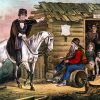 Arts, Culture, and Entertainment
Arts, Culture, and Entertainment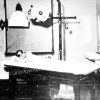 Early Twentieth Century, 1901 through 1940
Early Twentieth Century, 1901 through 1940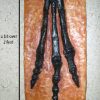 Science and Technology
Science and Technology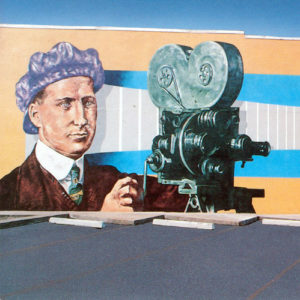 Freeman Owens-Broncho Billy Mural
Freeman Owens-Broncho Billy Mural 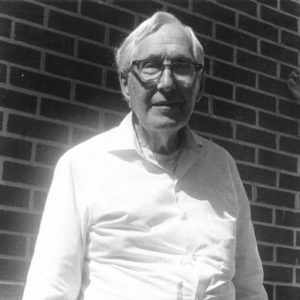 Freeman Owens
Freeman Owens 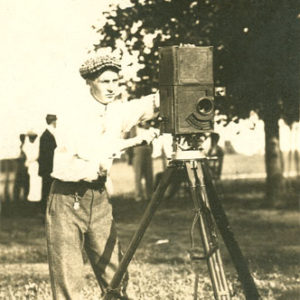 Freeman Owens
Freeman Owens 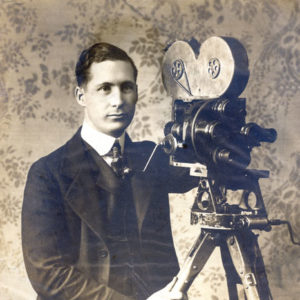 Freeman Owens
Freeman Owens 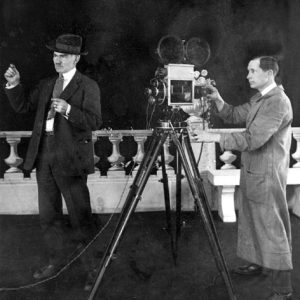 Freeman Owens
Freeman Owens 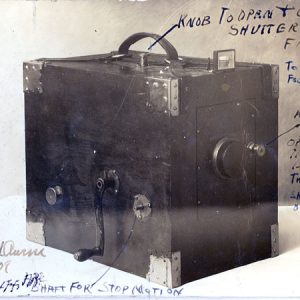 Freeman Owens Camera
Freeman Owens Camera 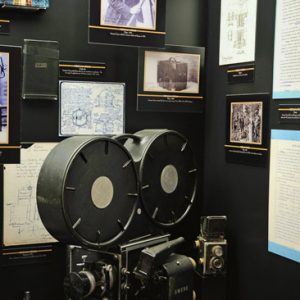 Freeman Owens Exhibit
Freeman Owens Exhibit 




Comments
No comments on this entry yet.